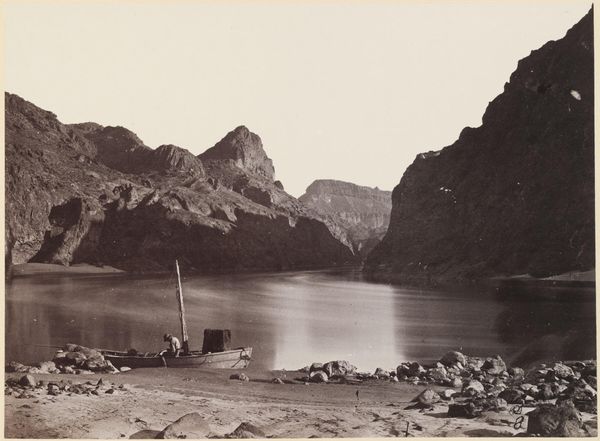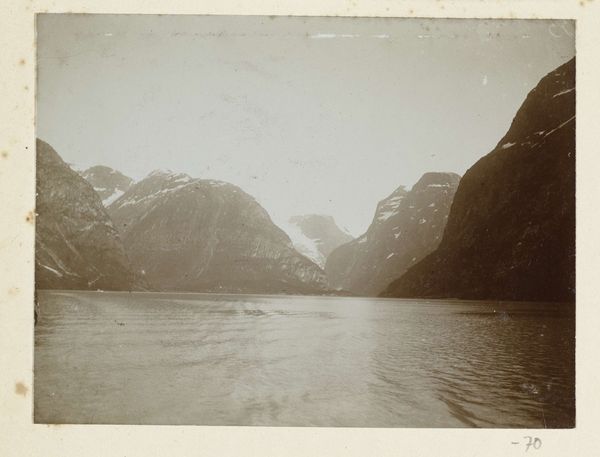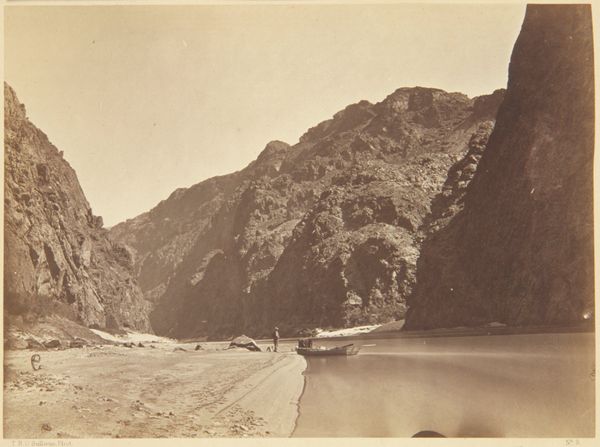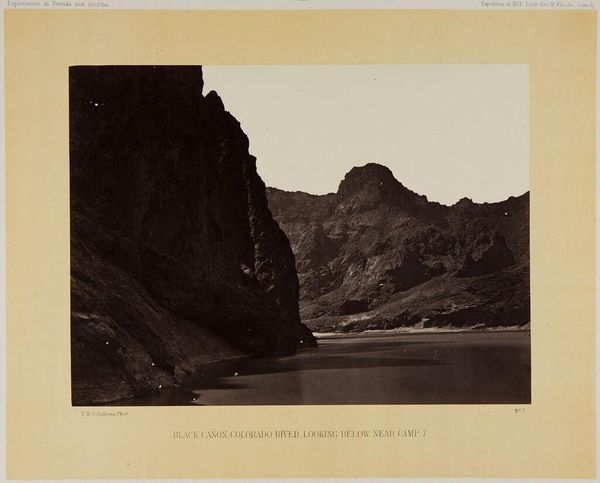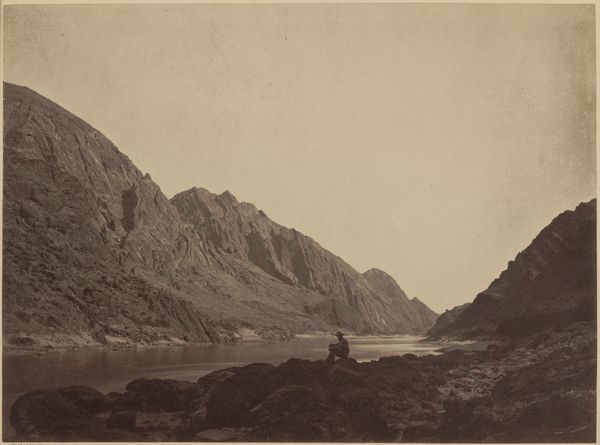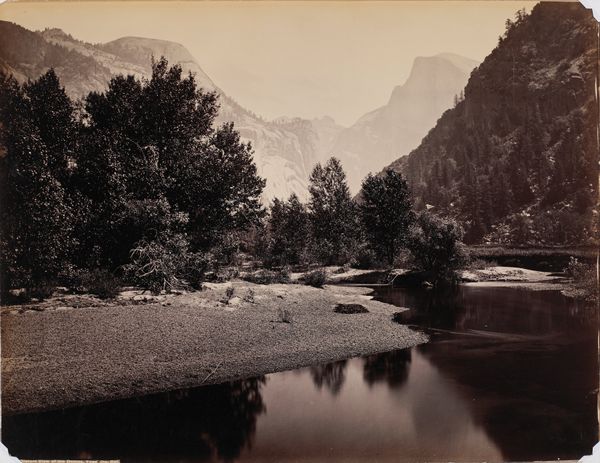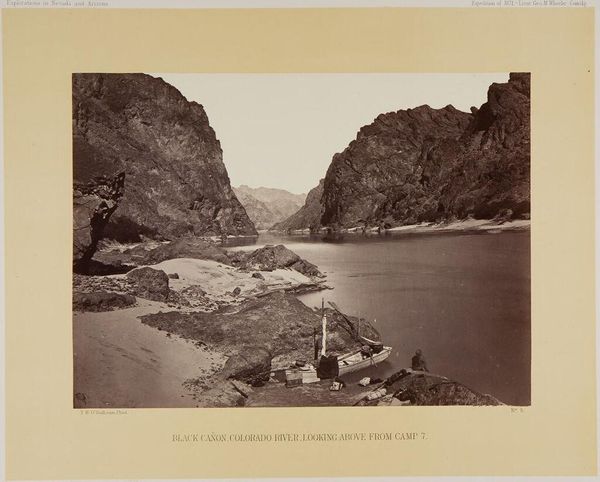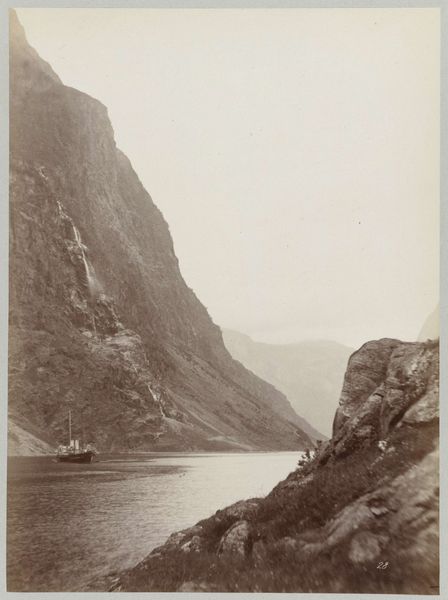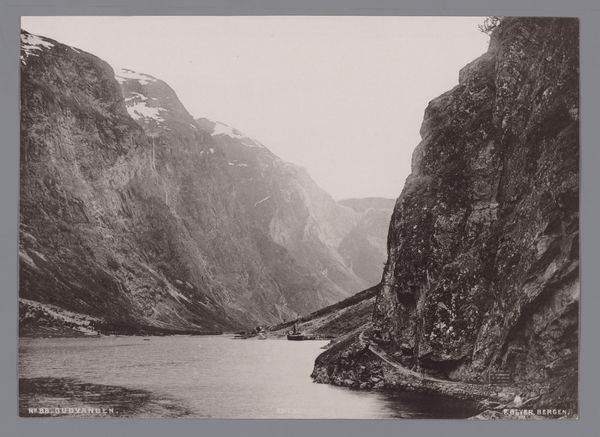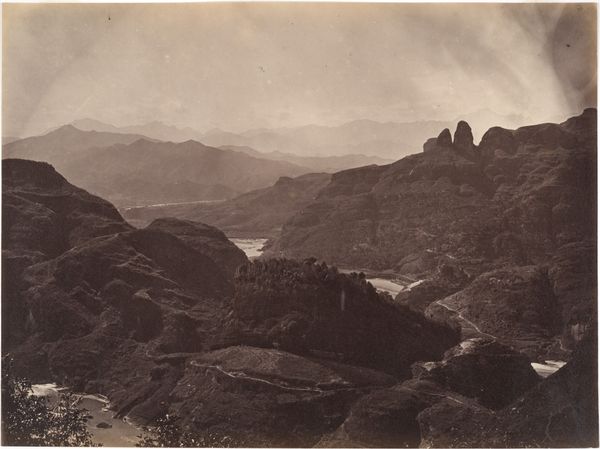
photography, gelatin-silver-print
#
16_19th-century
#
landscape
#
photography
#
gelatin-silver-print
Dimensions: 20 x 28.1 cm (7 7/8 x 11 1/16 in. )
Copyright: Public Domain
Curator: The atmosphere here is so arresting—that hazy, dreamlike surface of the water… it gives me an immediate sense of quiet solitude. Editor: Indeed. What we're looking at is Timothy O’Sullivan’s 1871 gelatin silver print, "Black Cañon, From Camp 8, Looking Above." It depicts a scene from the 1871 U.S. Geographical Surveys West of the 100th Meridian, documenting the landscape and resources of the American West, shaping public perceptions. Curator: The formal choices are striking. The composition emphasizes the dramatic contrast between the towering, dark canyon walls and that shimmering expanse of the river. The eye is led into the composition by that centrally positioned reflective mass, with all the tonality gradually darkening outward. Editor: It is powerful, isn't it? But also consider the social and political context: O'Sullivan was employed by the U.S. government at a time when Manifest Destiny was a driving force. Images like these not only documented the landscape but also fueled the narrative of westward expansion, influencing policy and public opinion. Curator: I can see how this image promotes the narrative. That almost spectral glow could be interpreted as inviting; and despite the small figure and vessel dwarfed by monumental landforms, they are indomitably present in the foreground, representing conquest. Editor: Right. But it’s not just about grandeur. Consider the limitations of photographic technology at the time. O'Sullivan used the wet plate collodion process. The diffused water we see comes down to long exposure times and technical challenges. This process was critical in how these landscapes became accessible as artworks. Curator: I concede to your point; it does raise questions about photographic truth versus artistic intervention even at its inception. Yet, these effects undeniably contribute to the picture's aesthetic impact, the composition and tone contributing more symbolism in its message. Editor: Precisely. And acknowledging these inherent visual and mechanical “flaws,” helps us interpret these images and O’Sullivan's position more accurately in relationship to nineteenth-century visual culture and government policy. Curator: Understanding both its form and its historical role provides a richer, more nuanced interpretation. Editor: Yes, the image allows us to contemplate Manifest Destiny ideology and ponder photography’s unique ability to shape understanding of history.
Comments
No comments
Be the first to comment and join the conversation on the ultimate creative platform.
